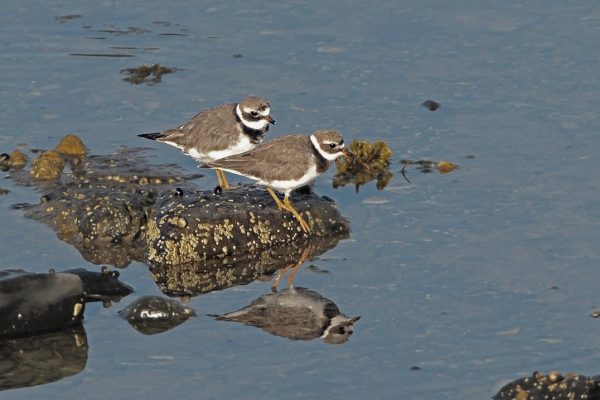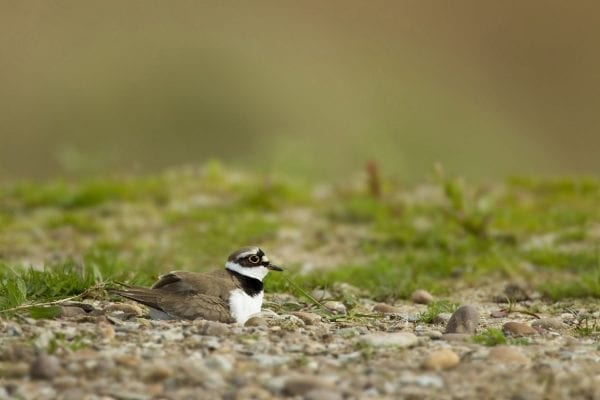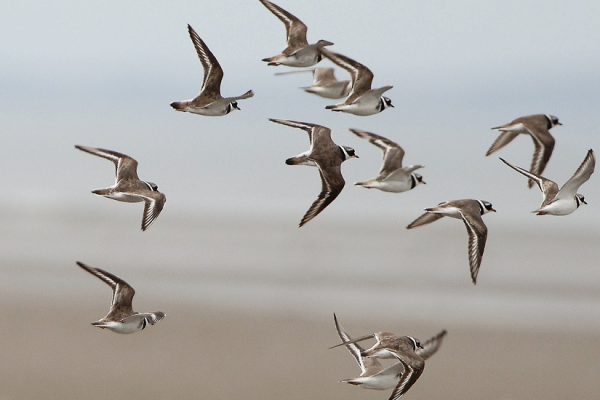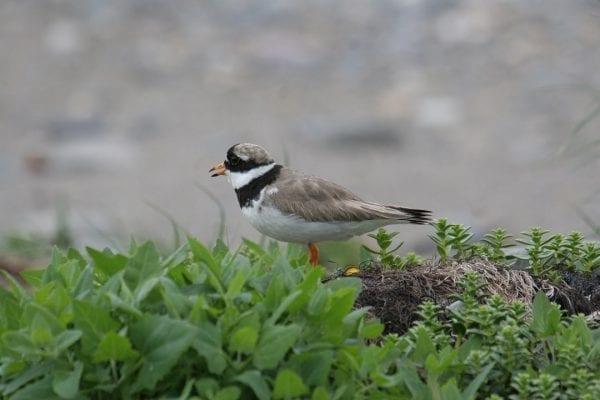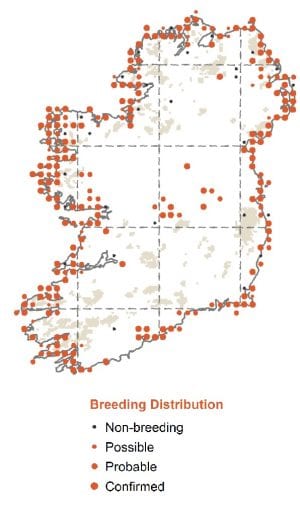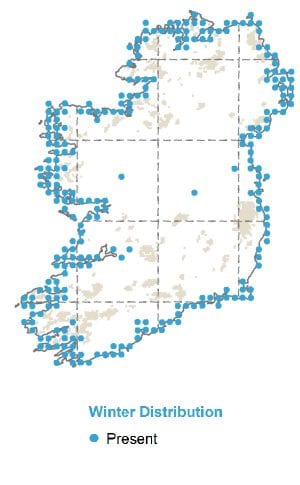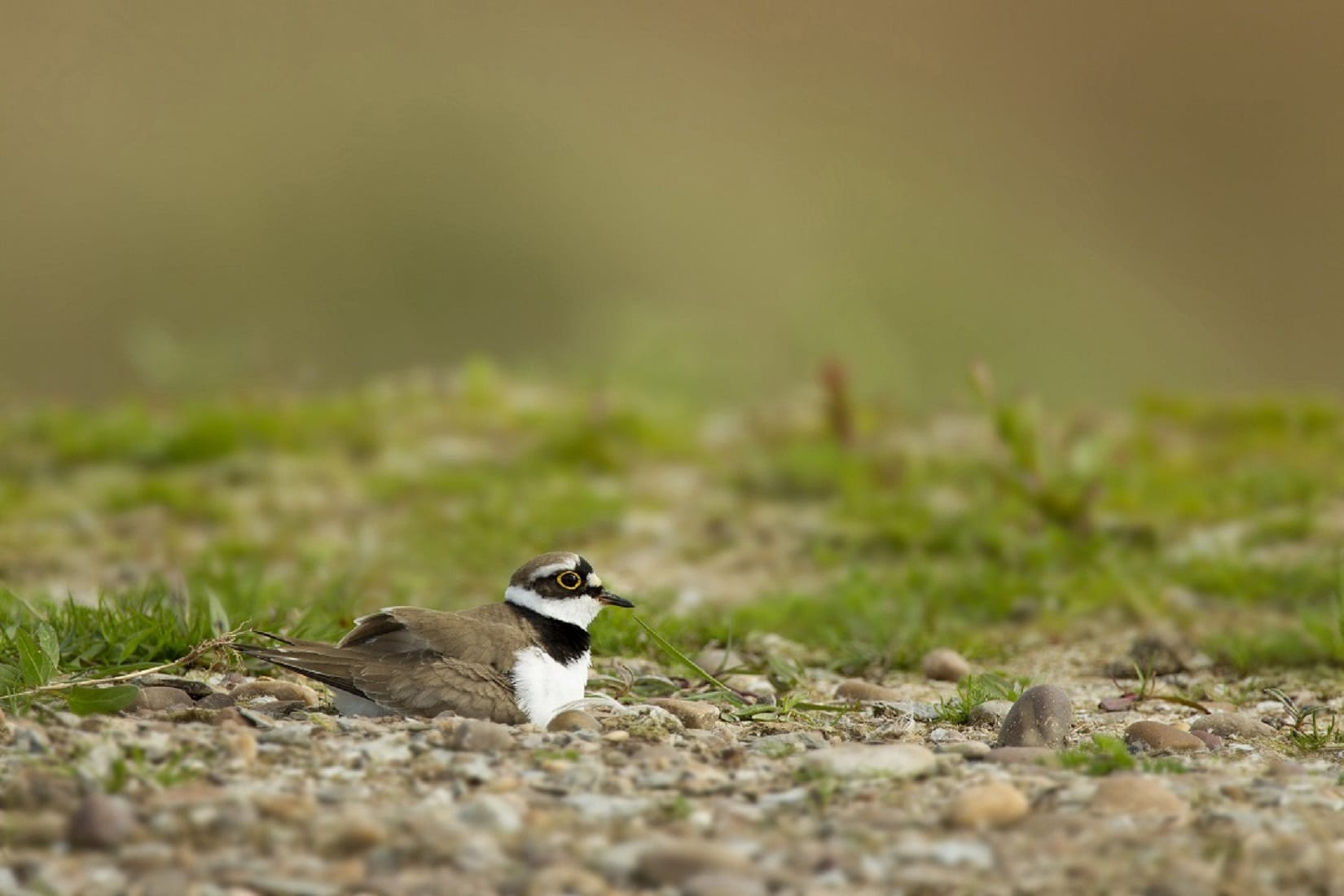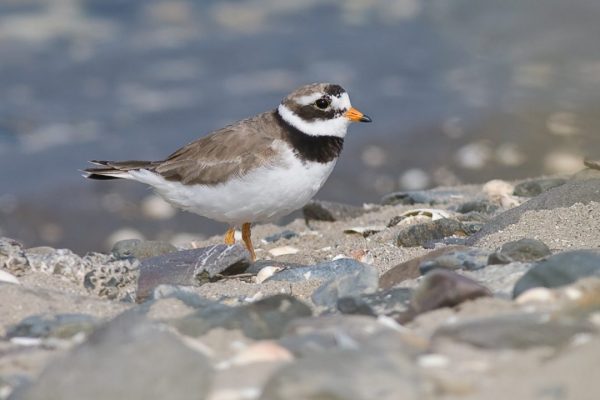
Ringed Plover
| Irish Name: | Feadóg chladaigh |
| Scientific name: | Charadrius hiaticula |
| Bird Family: | Plovers |
amber
Conservation status
Conservation status
Status
Resident & winter visitor from areas further north where this population also breeds (Iceland, the Baltic & southern Scandinavia). Peak numbers between August and early October, and then numbers decline slightly (passage birds move further south) and stabilise between November and January.
Identification
Compact, small wader, similar in size to Dunlin. Grey-brown upperparts and white underparts. Adults with orange bill with black tip in summer, which is mostly black in winter, orange legs, black ring widens as it extends across the chest. White throat and across the back of the neck. Prominent white wing-bar in flight.
Voice
Mellow 'choo-ee'. Alarm is sharp 'peep', song repeated rythmic, mellow 'tee-too-e' and hurried and repeated 't'weea-t'.
Diet
Hunts visually, scanning the area for signs of movement which indicate potential prey. It feeds on a variety of invertebrates, particularly polychaete worms and crustaceans. Characteristic plover feeding action - short run along ground, pause, bend to pick up food item followed by another run.
Breeding
Mostly coastal breeding distribution, preferring to nest on exposed wide sandy or shingle beaches. Some breed inland, particularly in the west, where their preferred nesting habitat is on short-grazed pasture beside rivers and along lake
Wintering
Winter around the entire coastline, but are quite sparse along the north and southeast coasts. Mostly recorded along sandy stretches or along the upper shores of estuaries and non-estuarine coastline
Monitored by
Blog posts about this bird
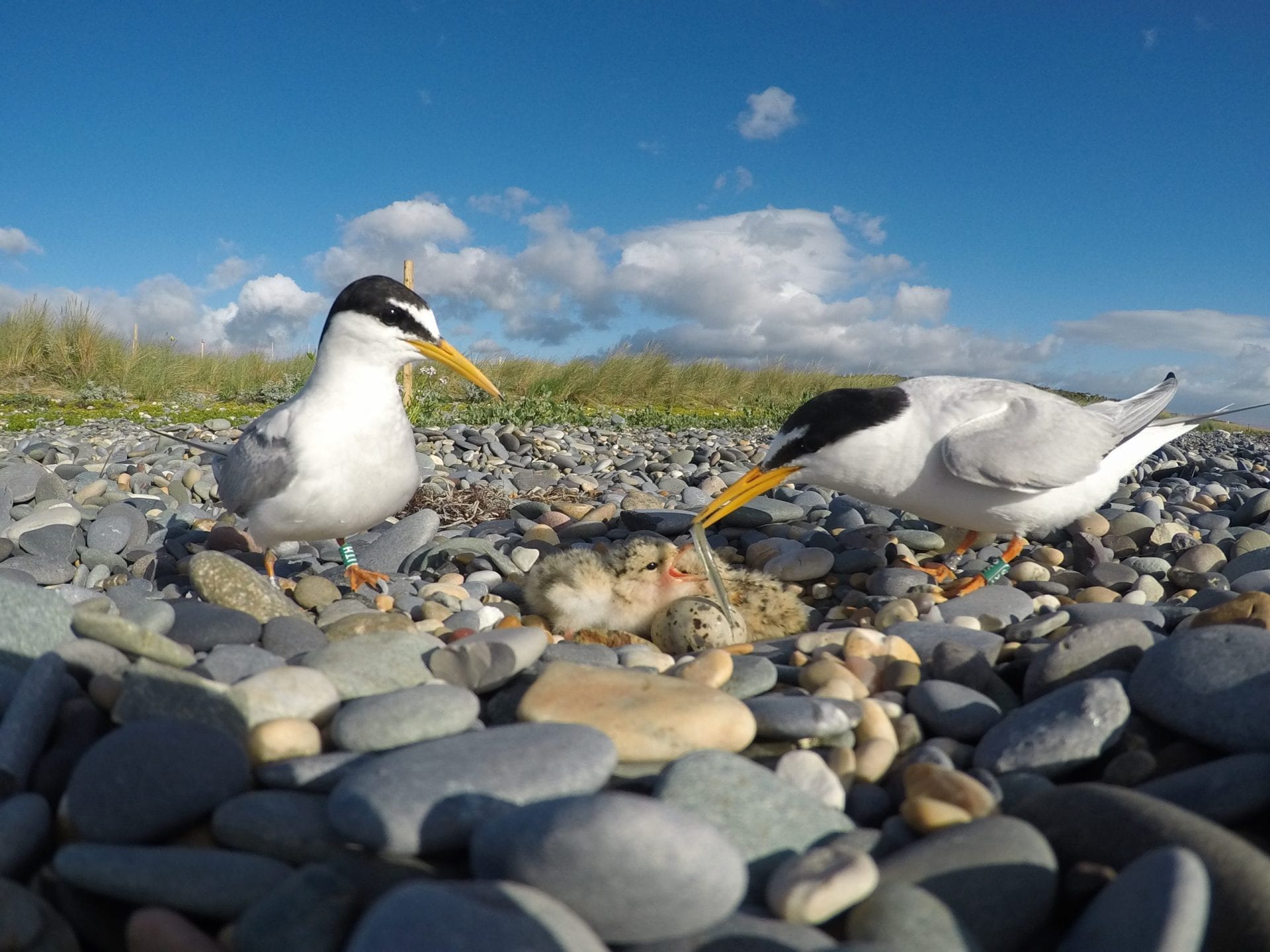
Kilcoole Terns it up to 11!
The last couple of weeks at the Kilcoole Little Tern conservation project have been pretty hectic; nests hatching, chicks running and bad weather looming! Since my last update the wardens have found our 312th nest and have ringed almost 350 chicks. We are well on our way to having another good year!






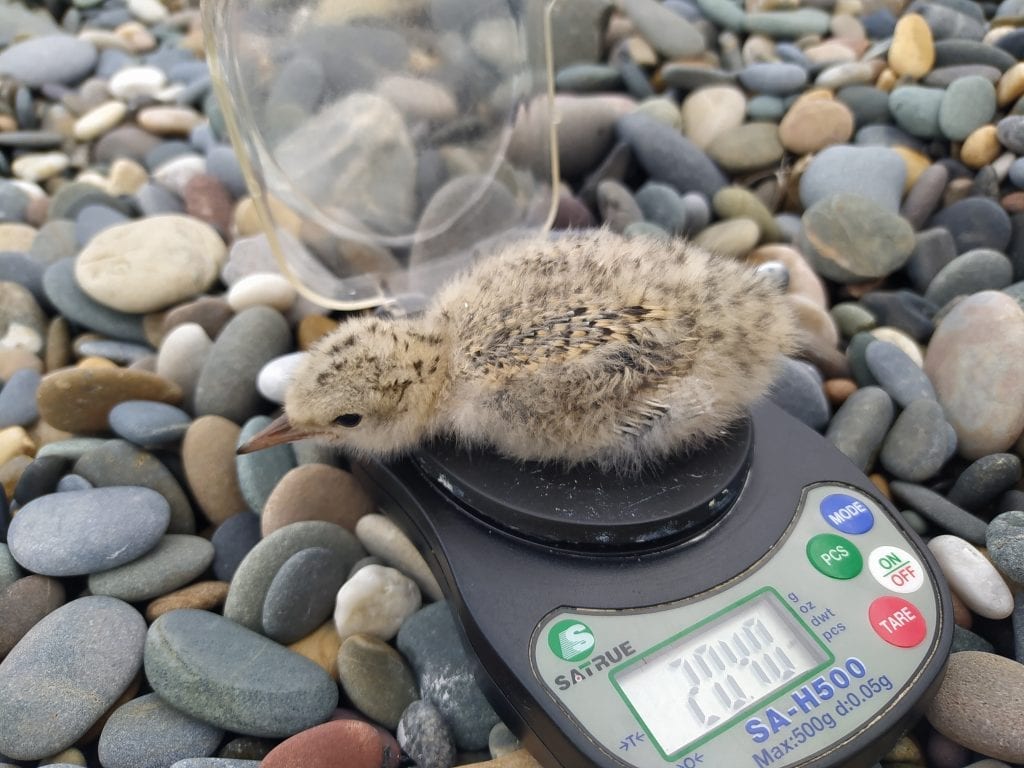
Little Tern chick being weighed as part of biometric data collection (A. McManus, photo taken under NPWS license)
We are now past the peak of the season, with fewer than 15 active clutches of eggs left in the colony. However, the work has not stopped. We are busy collecting biometric data on all the ringed chicks. For this we collect the wing length and weight of the chicks every day that we manage to find them. This allows us to determine the growth rate for chicks this year and compare it to previous years.
Thunderstorm over Kilcoole, Summer 2020 (C. Webb)
Although the colony has been doing well overall with over 300 chicks ringed and alive, it has not been entirely unscathed, with 29 chicks dying as a result of the bad weather during the month of June. Luckily the thunderstorm passed overhead without causing any damage, or toasting any wardens! [embed]https://youtu.be/SLvYcFAyq-o[/embed]Little Tern chick hatching at Kilcoole (E. Hogan, video taken under NPWS license)
This season has also seen a new study undertaken at the colony. We have had the pleasure of working with Eilis Hogan, who is currently finishing her masters in Environmental Leadership at NUIG. Eilis was using GoPro cameras to read colour-rings on our nesting Little Terns, allowing us to know how old they are, where they came from originally, and in some cases find out if they're birds that previously nested at other colonies. Eilis has found birds nesting in the colony which have originated from Kilcoole, Baltray (Co. Louth) and even some from Wales. As well as reading rings, Eilis was able to study feeding during the incubation and chick-rearing stages. Understanding better the feeding ecology of our Little Terns will be crucial to their continued conservation.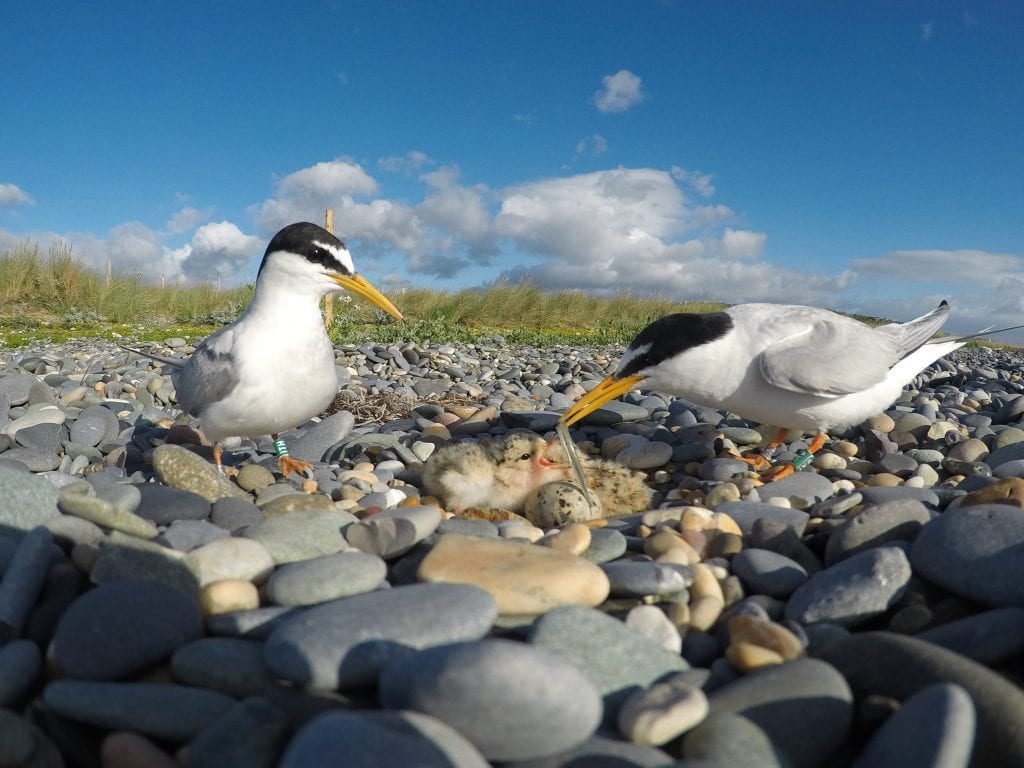
Green colour rings on the left leg of these Little Terns tell us these birds are originally from the Kilcoole colony (E. Hogan, video taken under NPWS license)

The yellow ring on the right leg of this Little Tern tells us this bird originally hatched as a chick in Wales (E. Hogan, video taken under NPWS license)
Other than terns, we have also had Ringed Plover and Oystercatchers nesting in the colony, and although we haven’t been closely monitoring their numbers this year, they all appear to have hatched and produced fledglings. We also found a Skylark nest within the Marram grass this season. All these species have benefited from the lack of disturbance and protection from predators within our fencing, and all seem to be doing well.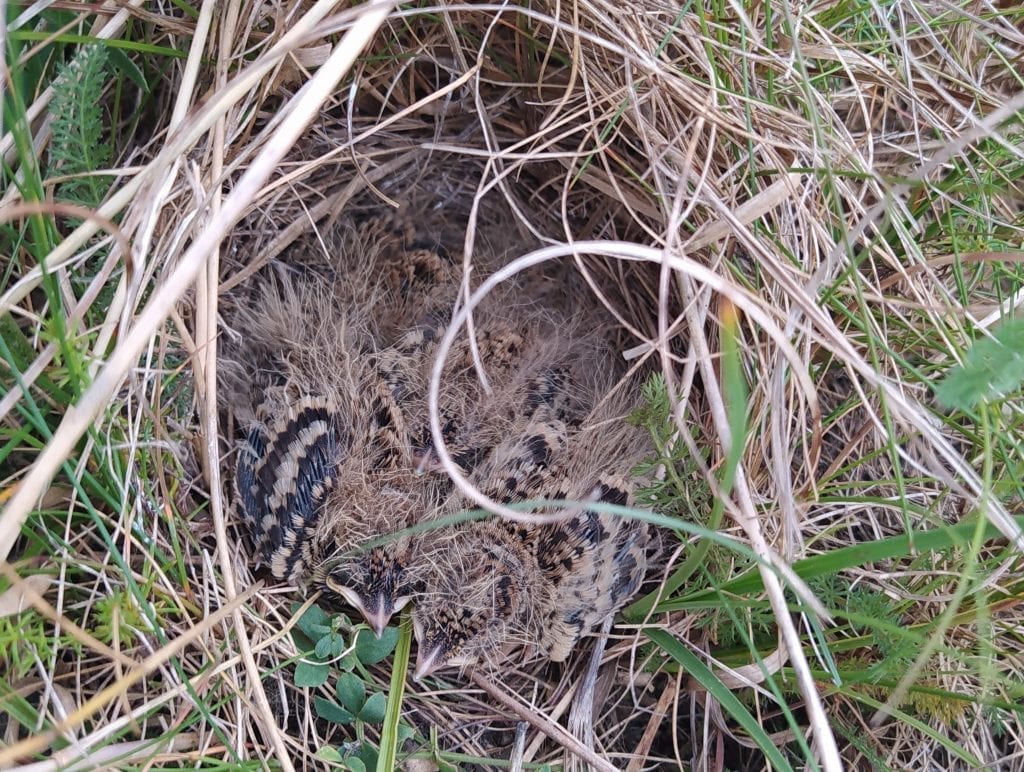
Skylark chicks in a well-hidden nest in a tussock of grass, inside our predator-proof fence (A. McManus, photo taken under NPWS license)
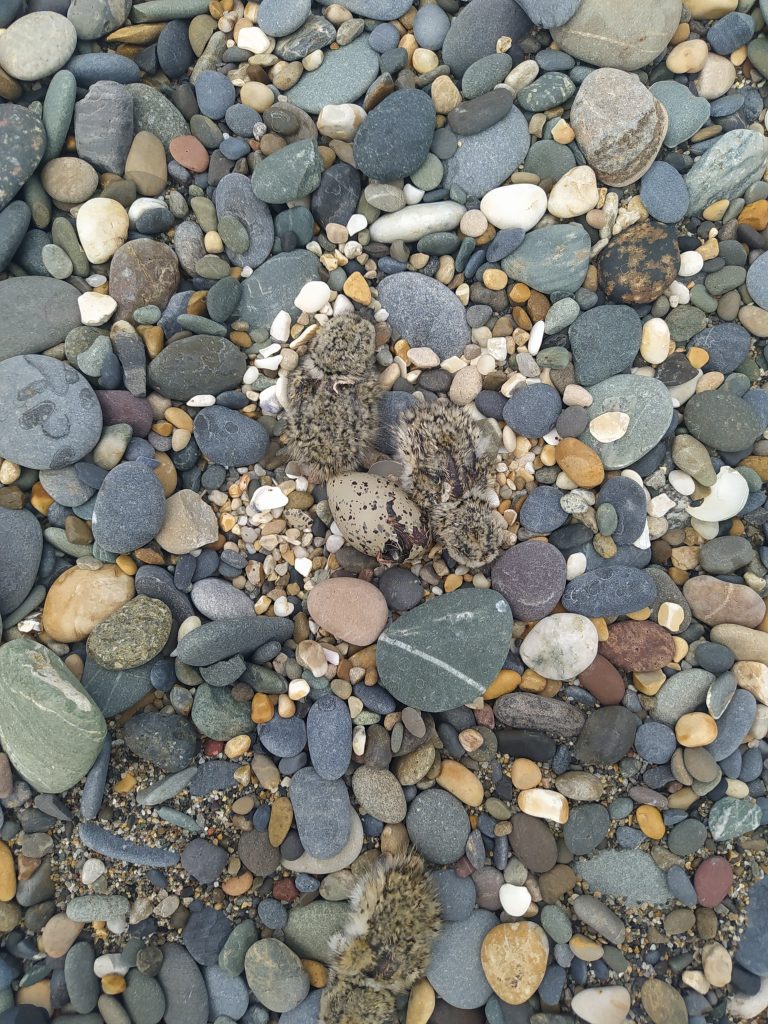
Well-camouflaged Ringed Plover chicks and egg, inside our predator-proof fence (A. McManus, photo taken under NPWS license)
As the season now enters the wind-down phase, the beach seems to be getting quieter, and some of Kilcoole’s fledglings have now been spotted as far out as the Portrane.That’s all the news we have for now!
All the best from Andrew & The Kilcoole 2020 team.
This year's work to protect and monitor the Little Terns and other nesting birds on Kilcoole Beach would not be possible without funding from the National Parks and Wildlife Service in Wicklow.
To revisit news and blogs from previous years at the Kilcoole LittleTern project, click here.

